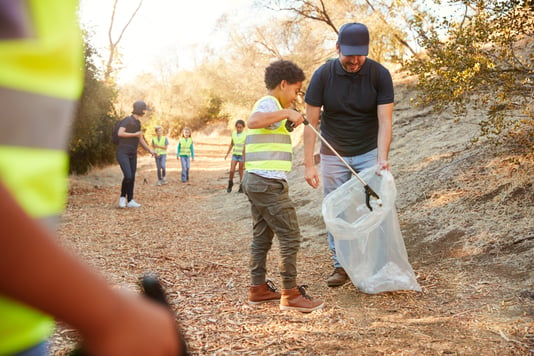It’s Marissa, Marketing Specialist at ArcMate here, and I'm excited to share some green travel...
Teaching Children Environmental Responsibility: A Guide for Parents and Educators
Introduction
Did you know that children who learn about environmental responsibility at a young age are more likely to become eco-conscious adults? Environmental responsibility isn't just for grown-ups – it's a crucial skill we need to instill in the next generation. This post will provide parents and educators with effective strategies to teach children about environmental responsibility, ensuring a brighter, greener future for all.
Why Environmental Responsibility Matters for Children 
Environmental responsibility isn't just an adult concern – it's vital for children too. Here's why:
- Early adoption of eco-friendly habits: Children who learn environmental responsibility young are more likely to maintain these habits throughout their lives.
- Catalyst for change: While adults often drive societal changes, the seeds of environmental responsibility are planted in childhood.
- Leading by example: Children raised in environmentally conscious families are more likely to develop similar values and perpetuate positive environmental actions.
- Empowerment through knowledge: Understanding environmental responsibility gives children the tools to make a difference in their communities and the world.
Practical Ways to Teach Environmental Responsibility
Teaching environmental responsibility to children doesn't have to be complicated. Here are some effective methods:
- Start with recycling: Teach children about different types of recyclables and why recycling matters.
- Water conservation: Use everyday moments, like brushing teeth, to explain the importance of conserving water.
- Lead by example: Remember, many behaviors are "caught, not taught." Model environmental responsibility in your daily life.
- Gardening and composting: Introduce children to basic gardening and composting to teach them about sustainable food production and waste reduction.
- Community involvement: Participate in local clean-up events to show children the direct impact of environmental responsibility.
- Explore nature: Take children to parks or nature reserves to foster appreciation for the environment they're learning to protect.
Overcoming Challenges in Teaching Environmental Responsibility
Some may argue that children shouldn't be burdened with environmental concerns. However, teaching environmental responsibility from a young age has several benefits:
- Early education leads to lifelong habits
- Children can educate their peers
- Young people can make significant impacts on their communities
Remember, being environmentally responsible doesn't have to be difficult or expensive. Simple actions like using recycled products, reducing waste, and participating in community clean-ups are accessible ways for both adults and children to practice environmental responsibility.
Conclusion
Teaching children about environmental responsibility is an investment in our planet's future. Through leading by example and engaging children in eco-friendly activities, we can nurture a generation of environmentally conscious individuals. From recycling at home to participating in community clean-ups, there are countless ways for children to embrace environmental responsibility.
By instilling these values early, we empower today's youth to become the environmentally responsible adults our world needs tomorrow. Let's work together to raise a generation that not only understands environmental responsibility but actively practices it for a sustainable future.




